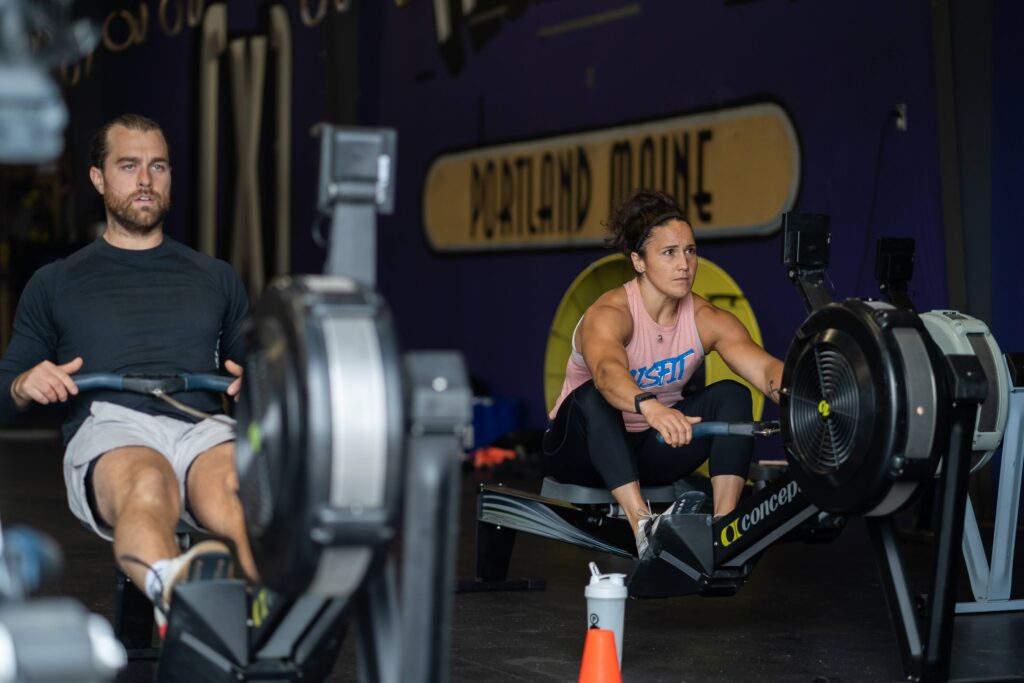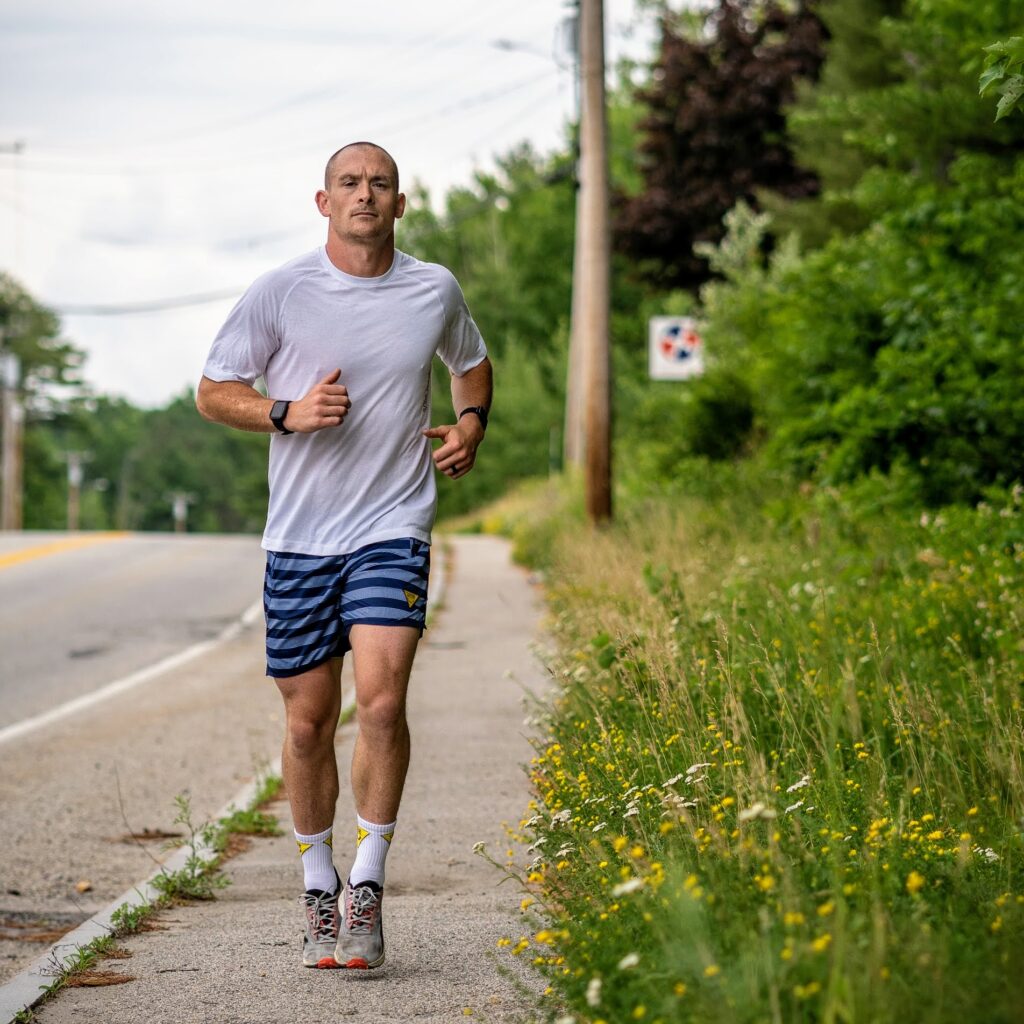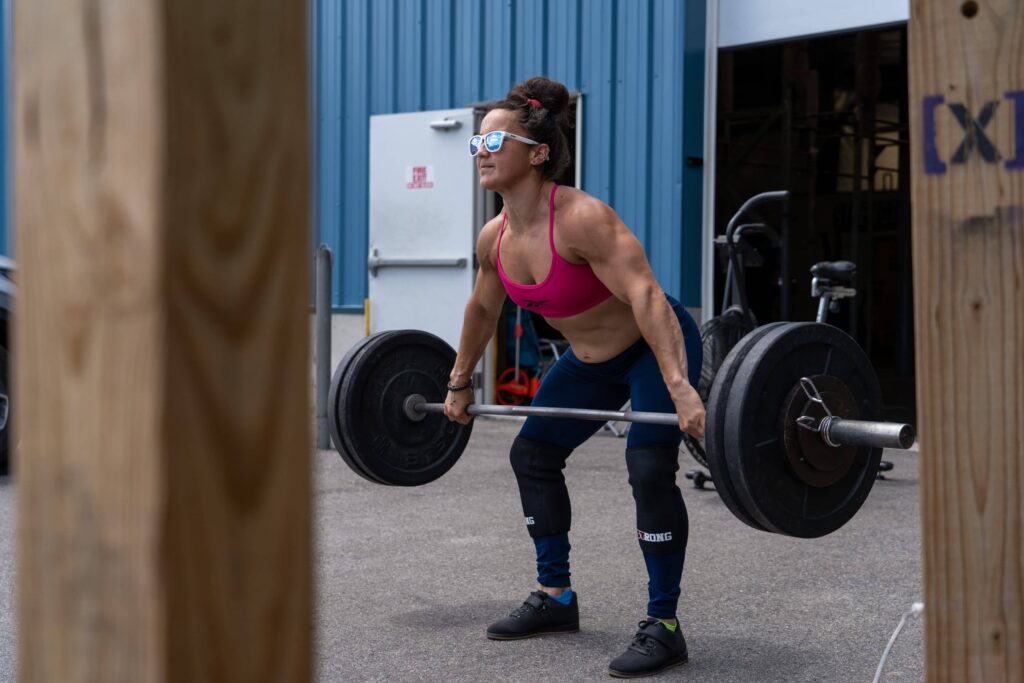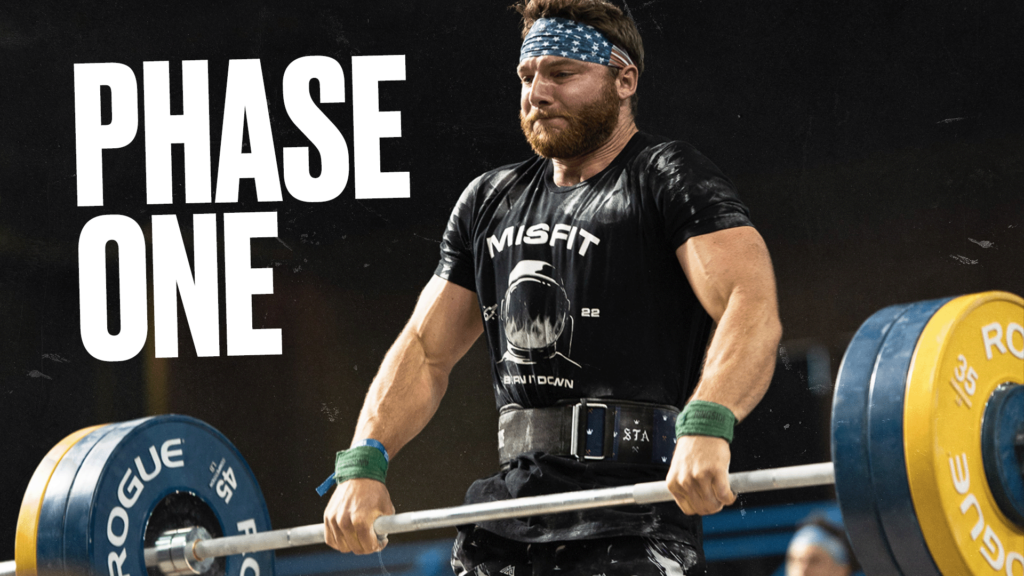A CrossFitters Guide to Zone 2 Training

Welcome to the CrossFitters guide to Zone 2 training. My goal is to dismiss semantics and scientific jargon in the name of arming you with a clear and concise breakdown of how to use heart rate based training to develop your aerobic system. Before we dive in, I ask that you take a moment to gather up what you’ve been told about Zone 2, Zone 3, Zone XYZ, lactate, whether cavemen ate bread (kidding), and set it to the side so we can approach this from a clean slate.
Mind open and clear? Great. Let’s dig in.
What is Zone 2 Training?
In simple terms, Zone 2 training refers to setting specific parameters to your training session that keep you in an aerobic state. Much of the confusion and fog surrounding this topic comes from the apples to oranges to bananas comparisons. To accurately assess whether we are remaining aerobic would entail testing blood lactate levels, which adds a barrier to entry many of you wouldn’t want to overcome each time you wanted to target and develop your aerobic system. Translating blood lactate levels to individuals’ heart rate or heart rate variability markers is an imperfect science and highly variable from person to person.
At Misfit Athletics, we rely on a straightforward equation developed by some of the world’s top endurance coaches and athletes. These simple equations based on age and heart rate have been put into practice with various Misfit athletes for the past eight years with some truly staggering results.

Why Should I do Zone 2 Training?
Another common name for this style of training is “Aerobic Threshold Training,” Whether you decide to rename it in your mind or not, it becomes a straightforward explanation for why you should do it.
The origins of CrossFit methodology did a fantastic job of casting a wide net in the name of overall fitness, but the training prescription that has emerged has a pretty gaping hole in it, especially for those interested in competing at a thigh level. Whether by design or due to the competitive nature of the sport born from the methodology, most of us do not spend enough time intentionally developing our aerobic system. When done correctly, Zone 2 training is performed below your aerobic threshold. Week after week, hour after hour, your output will increase while your heart rate stays where you want it. By maintaining a lower heart rate, you recruit the type of muscle fibers responsible for slower, more repetitive movement that are the primary form of physical support for our joints, bones, and other muscles. As these muscles develop, they become more and more of a factor in activities that required much more energy to perform in the past. Perhaps the most tangible benefit to developing and increasing your aerobic threshold is the ability to clear waste from your muscles at higher and higher outputs. An athlete with a lower threshold will “feel the burn” at much lower outputs than an athlete who takes the time to continuously lift that ceiling higher.
While these adaptations occur within your body, there is another really special element at play in the background. When we get beyond our threshold and into a predominantly anaerobic state, we signal our bodies to release stress hormones that increase our heart rate and allow the anaerobic mechanism to kick in. These hormones are powerful and essential when turned on intentionally, but can be damaging when we flick that light switch on and off sporadically. By moving the goalposts of our threshold out further and further, that stress response becomes much harder to trigger, keeping you in a calmer state more often.
TLDR: Zone 2 training improves your aerobic threshold. A higher threshold yields a faster athlete at a lower heart rate, slow-twitch muscle fibers that prevent injury and are used at faster speeds, keeps muscle fatigue at bay at a higher output and delays the point at which our stress response turns on.
Who is Zone 2 Training For?
While this website is geared specifically towards helping athletes and coaches within the sport of CrossFit, we also feel very strongly about the health and wellbeing of the members at our hometown affiliates and the community at large. With that in mind, I will lay out a spectrum and the case for the end-to-end adoption of Zone 2 training. The Average Joe stands to gain the most considerable benefit from developing their aerobic system in the grand scheme of things. Before we discuss your ascent to the CrossFit Games podium, let’s keep in mind that dramatically increasing the lifespan and healthspan of our loved ones is a pretty big deal. As we slide towards the middle of this spectrum, we find many familiar faces (maybe our own) within the category of pretty fit but seriously lacking in the endurance category. Last but not least is a group that couldn’t be where they are without an impressive aerobic threshold: the competitive CrossFitter. Even they know deep down that staving off fatigue, reducing injury, developing supporting musculature in specific areas, etc., is a worthwhile endeavor.
TLDR: It’s for everyone.
How do I do Zone 2 Training?
Luckily for both coaches and athletes out there, setting the parameters to stay below threshold only requires knowing how old you are and potentially a calculator. We rely on the (180bpm – Your Age) formula from Dr. Phil Maffetone, which has been put to the test by millions of athletes worldwide, and specifically within both competitive and general wellness-based programs at Misfit Athletics. Below is a complete breakdown of how to warm up, test your progress, execute a session, cool down, and recover from what we refer to as Maffetone work in our programming.

Warm-up
If you’re going to potentially dedicate hours of your week to developing a more robust aerobic system, you’re going to need to dig into a solid warm-up that prepares your body and allows you to collect accurate data. At rest, most of your blood is moving around your internal organs, which means very little of it is moving around in the muscle. You signal the body to send that blood out to the muscles by slowly increasing activity levels. We use a slow increase in heart rate to moderate this process, which takes roughly 15 minutes to achieve. The quicker onset of activity signals the body to panic, forcing your core muscles to contract to send blood out immediately, which in turn skyrockets your heart rate, and shunts blood flow to the legs. The warm-up requires a bit more math and a little extra time but is well worth it:
MAFF Session (Zone 2/aerobic session) Warm-Up
5:00, Heart Rate @ (160-age)
5:00, Heart Rate @ (165-age)
5:00, Slowly Build Heart Rate to (180-age)
Rest/mobilize/hydrate for 5:00, then begin.
Testing
Before diving into your first session, make sure you set a baseline for how your body is currently performing below the threshold. This is done by performing a single distance at your 180-age heart rate (e.g. a 31 year old would perform the entire test at 149 beats per minute, or 180-31), with three equidistant checkpoints along the way. CrossFitters beware: it will be slow, and you will get slower as time goes on. Unlike an AMRAP or Rounds for Time, your effort is not being put up to the test, but your metabolic machinery certainly is. Do not exceed your prescribed heart rate, and if you do, slow down to bring it back to the appropriate level.
Maffetone Test – For Time
Choose one of the following modalities:
1) Run 3 miles (Checkpoints every 1 mile)
2) Row 6,000/4800m (Checkpoints every 2/1.6k)
3) Ski 6,000/4800m (Checkpoints every 2/1.6k)
4) C2 Bike 12/9.6k (Checkpoints every 4/3.2k)
After you’ve tested and dug into your sessions, go back and re-test to see what your three split times look like compared to your baseline.
Training
The majority of Maffetone sessions range from 45-90 minutes, with the 45-60 minute domain looking like the sweet spot based on our data from CF athletes. Whether you’re running or on a machine, this is the most straightforward part of the entire article: stay at your 180-age heart rate for the entire session. There will be factors that come into play like hydration, air temperature, humidity, energy levels, etc., that will determine whether you can hold a steady-state pace, get faster as you go, or slower as you go. This is the type of work that pays dividends down the road, and deciding to ditch your heart rate because of ego will only play against you. We deal with this issue by taking advice from the endurance community and switching up the metrics. On machines, we like to score our sessions with wattage and compare athletes to each other by measuring watts per kilo of bodyweight. If you’re logging miles out on the road, ditch the watch screen that says pace and keep it on your heart rate. By waiting until the end to log your pace, you can zone out and keep your heart rate in check. If you are a Misfit Athletics follower, this is what your sessions will look like:
Maffetone Session – For Average Wattage OR Pace
Using your test week machine of choice (Run, Row, Ski, or C2 Bike):
–
MAFF Session
Warm Up
5:00, Heart Rate @ (160-age)
5:00, Heart Rate @ (165-age)
5:00, Slowly Build Heart Rate to (180-age)
Rest/mobilize/hydrate for 5:00
then,
45:00 w/ Heart Rate @ 180-age
then,
Cool Down – SAF (slow af) 12-15 Minutes
Cool Down
If we simplify the idea of warming up, it amounts to slowly sending blood out to our muscles. Keeping with the concept of simplicity, cooling down slowly sends that blood back, but with the all-important benefit of “cleaning it up” in the process. Not cooling down results in an immediate heart rate drop, which leaves the blood pooled up in our muscles. Not only does this blunt circulation, but it is a direct explanation of why we get sore. The endurance community often refers to it as “dirty blood” due to the large quantities of damaging by-products accumulated during exercise. Continuing to move slowly pushes that blood and its damaging properties out of the muscles and back to where our body wants it. The protocol is simple: walk, bike, row, ski, etc., for 15 minutes, nice and slow.
Recovery
This guide would be incomplete if we didn’t reference two more important anecdotes beyond a cool down related to recovery. If you’re going to log serious miles running, please take the time before and after each session to take care of your feet and ankles. At Misfit HQ, we rely on a steady diet of rolling out our arches and voodoo flossing ankles/calves before and after each session. For the rest of the possible machine choices, along with running, you have potentially the best opportunity of your week to mobilize and see results after your cool down. Warm tissues and adequate blood flow make for a near-perfect setting to mobilize trouble areas.
When should I do Zone 2 Training?
Being intentional with how you work this training style into your programming is a crucial component of its efficacy. With the more traditional schedule of one active rest day and one full rest day per week, we recommend starting with a single session as your active rest day work. Once you get a feel for its effect on the rest of your training, you can begin to add additional sessions to your dedicated training days. With this level of intensity relying more on your body’s fat stores than what you’re used to, it can also be an added benefit to do this type of training in the morning before your first meal. When you hear us talk about “fasted cardio,” this is precisely what we are referring to. Keep in mind that if it does not fit your schedule or nutritional goals to do so, it is more important to get the session in than to wait until the magical time you can or should train fasted.
FAQs
How do I choose which machine to start on?
I will use a hierarchy that we can work our way through for this one. The first answer is the machine you have. Don’t overthink this if it causes you to skip it. In keeping with that theme, the next question is, what machine will you be consistent on? We would love for you to choose a weakness, but not if you’re going to be prone to skip it. The obvious first answer for serious athletes is to pick a weakness and get to work, suck at running? Run. Rowing paces always falling off? Row. Our last step in evaluating which machine or machines to use is localized muscle fatigue. If you’re consistently stopping leg-intensive movements sooner than your competition, the Concept 2 bike is a real game-changer. If your arms blow up in that same way before you want them to, the ski erg is very powerful at developing upper body muscle endurance over time.
What if I cannot get my heart rate up high enough?
In some rare cases, we find athletes that cannot rev the bike or ski erg up high enough to achieve their target heart rate without burning out muscle groups. In this situation, we rely on our trusty friend: linear progression. Do a session based on feel, record your average wattage, add up to 10 watts for your pace the following week, and so on. Still, make sure to keep an eye on your heart rate as you might develop to the point where you can reevaluate to relying on heart rate alone.
How often should I do these sessions?
I typically begin by answering this question with a series of questions. How much time do you have? What is the current state of your aerobic functioning? And what are your goals? The literature says a minimum of 90 minutes per week is needed to move the needle on longevity from a general wellness perspective. From a performance standpoint, an athlete that needs serious help in this realm should be logging upwards of 3-4 hours a week until the progress shows up in a sport-specific setting. Everyone else will live somewhere between there, keeping in mind we see the best results in 45-60 minute sessions. A conditioned athlete looking to make major changes should commit to at least 3 months of consistent sessions before fully evaluating its efficacy. Deconditioned athletes, and athletes who have skated by with power and skill should extend that window out to at least 6 months, if not a full year to see the type of changes that will drastically alter their capacity.
What if I cannot run/jog and keep my heart rate that low?
There’s a great chance that if this is the case, you really should stick with a run/jog/walk progression. Supporting your body weight while moving through space is a fundamental human expression, and doing so for long periods is what we are born with the machinery to do. The short answer is straightforward, jog and walk at your heart rate 1-4 times per week, and eventually, it will be a lot more jogging than walking.
Why are some sessions so much slower than others?
Variables like hydration, temperature, HRV, soreness, headspace, and even external distractions will play a significant role in what your wattage or pace will look like at your target heart rate. Do what you can to regulate electrolyte balance, body temperature, general recovery protocols, and setting to keep the highs and lows in check, but most of all, trust the process and give yourself a lot of credit for showing up and finishing. There will be differences in your paces and heart rate from day to day, but your averages will trend in the direction you want over time.
What if I don’t have a heart rate monitor?
If you’re a serious athlete or are serious about your goals/health: I don’t want to hear it. Buy one. If you genuinely cannot afford it or want to give it a shot, your session should live smack between what we call a conversational pace and something you would struggle to hold as a steady-state session. You can answer a question here or there, say hello to a passerby, but an entire conversation will force you to slow down or leave your target heart rate in the dust.
Don’t talk about it, be about it.
At the end of the day, I hope you’re leaving this guide with enough information to make some fundamental changes to your overall fitness and health. We’ve seen some athletes make the leap from hobbyist to professional after an off-season with a healthy dose of Zone 2 work, so it only felt right to break it down and share it with everyone. Go log some miles and meters and report back.

by coach Drew Crandall


